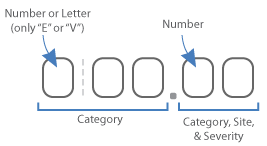by Rhonda Butler, senior clinical research analyst with 3M Health Information Systems.
See full article here
What makes a species distinct enough that it gets its own unique name? Like any classification system, Linnaeus’ conceptual framework for organizing and naming living things is an exercise in drawing boundaries. Similar things are grouped together, initially by laying out general boundaries—is it animal, vegetable, or mineral?—and making progressively finer distinctions.
All classification systems work in basically the same way, because all classification systems are products of the human mind. Classification is a profoundly human endeavor. We invent systems that allow us to organize and codify our understanding of the world and ourselves.
ICD-10 is a classification system for understanding the ways our own bodies can break or be broken, and what we can do to try and fix them. ICD-10 has more codes than ICD-9 simply because it makes finer distinctions.
To the extent possible, classification systems try to ask for the same amount of detail in drawing a next level boundary. Often this is depicted in graphic form like a tree structure—the kind of thing we see in a company’s org charts all the time. As it evolved with each annual update, ICD-9 did not make a serious attempt to be systematic in the detail it added, or consistent in the types of information it classified to the same level boundary.
ICD-10 is both systematic in its application of detail and consistent in the type of information it classifies to the same level boundary. For example, the American Congress of Obstetricians and Gynecologists (ACOG) asked the CDC’s National Center for Health Statistics (NCHS) to add detail to ICD-10 that tells them whether a pregnant woman is in the first, second or third trimester of her pregnancy. So that information about trimester of pregnancy was added systematically to the obstetrics branch of the ICD-10 tree.
Systematic and complete application of detail to an entire branch of a classification system obviously increases the number of codes by a factor of the amount of meaningful detail—three trimesters = three times as many pregnancy diagnosis codes.
And that is of course the point of any good classification, to draw boundaries that are meaningful to the people in that field. Imagine telling ACOG that all trimesters are the same, that the information they asked for in ICD-10 is unnecessary and a burden to physicians, and that they can track quality, outcomes, and do sophisticated clinical research without knowing the trimester of the patient. Maybe the opponents of ICD-10 can tell them.


